Garages were once easy to deal with. Their function was to store a vehicle. Not anymore. Garage space is becoming too valuable for just vehicle storage. They are becoming part of the house and often end up being conditioned. They also often end up being lived in.
We have learned that garages should be thermally isolated from the interior occupied space regardless of whether they are unheated, minimally heated or fully heated. Folks often turn off heating systems to save energy. Heated garages obviously should be insulated.
I am going to get into trouble with this next comment…unheated garages obviously should be insulated because over time they become part of the conditioned space…and wait for it…heated.
Garages are often “tucked in” to houses typically with living space/conditioned space above the garages (Photograph 1) the garages need to be effectively thermally isolated from interior occupied spaces if garages are intended to be unheated, minimally heated or fully heated.
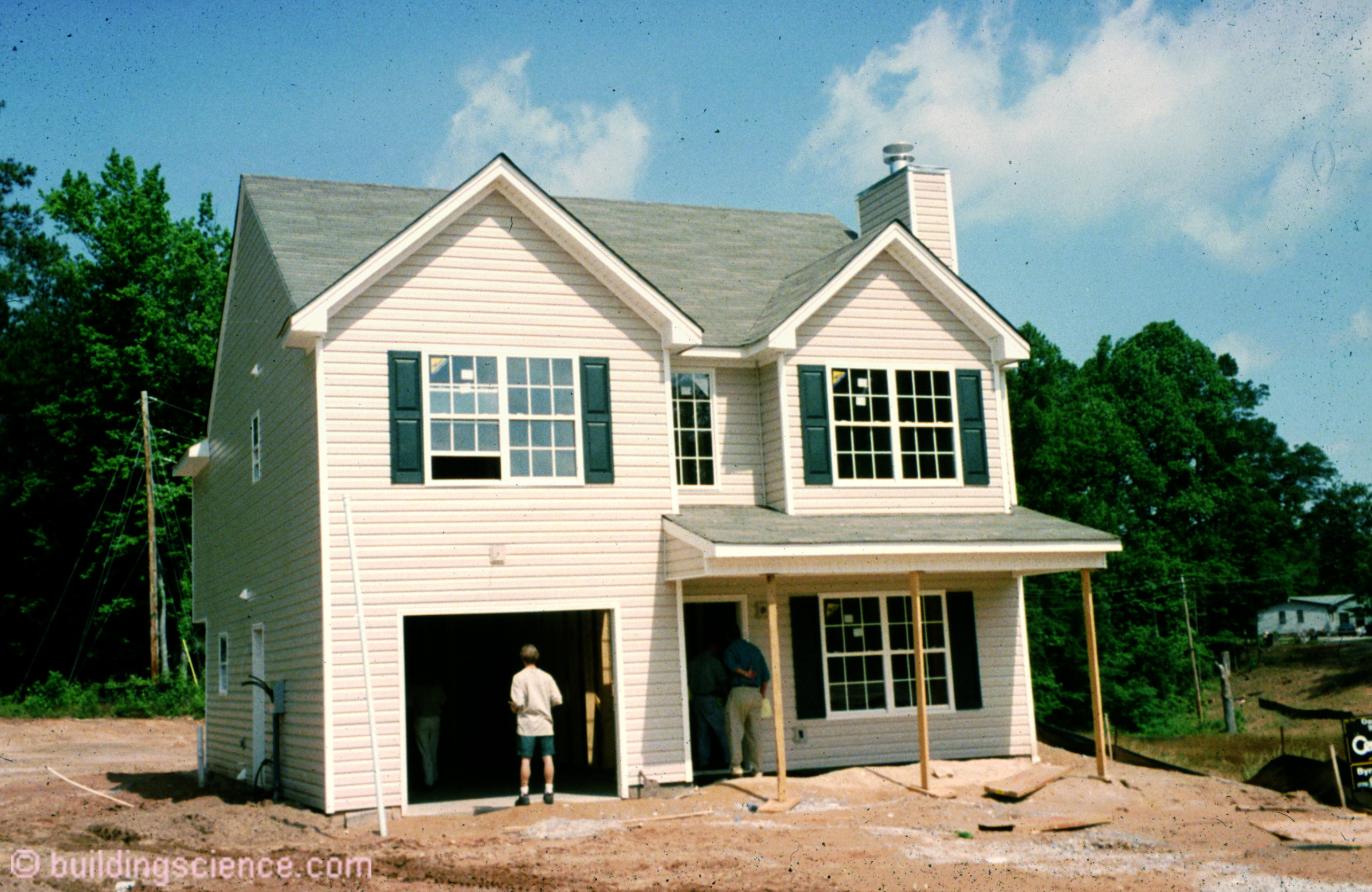
Photograph 1: Garages are often “tucked in” to houses typically with living space/conditioned space above the garage
Figure 1 illustrates the use of rigid insulation and wood blocking for air sealing to provide thermal isolation between the occupied space and the garage. Photograph 2 illustrates the use of rigid insulating sheathing on the wall separating the house from the garage. Note that the rigid insulation assembly will need to meet applicable fire rating requirements. Photograph 3 illustrates the use of OSB blocking that is notched around wood I-joist floor framing. Photograph 4 illustrates the use of gypsum board blocking with a floor truss assembly. Note the location of a vertical member within the floor truss to simplify the installation of the truss gypsum board air sealing blocking.
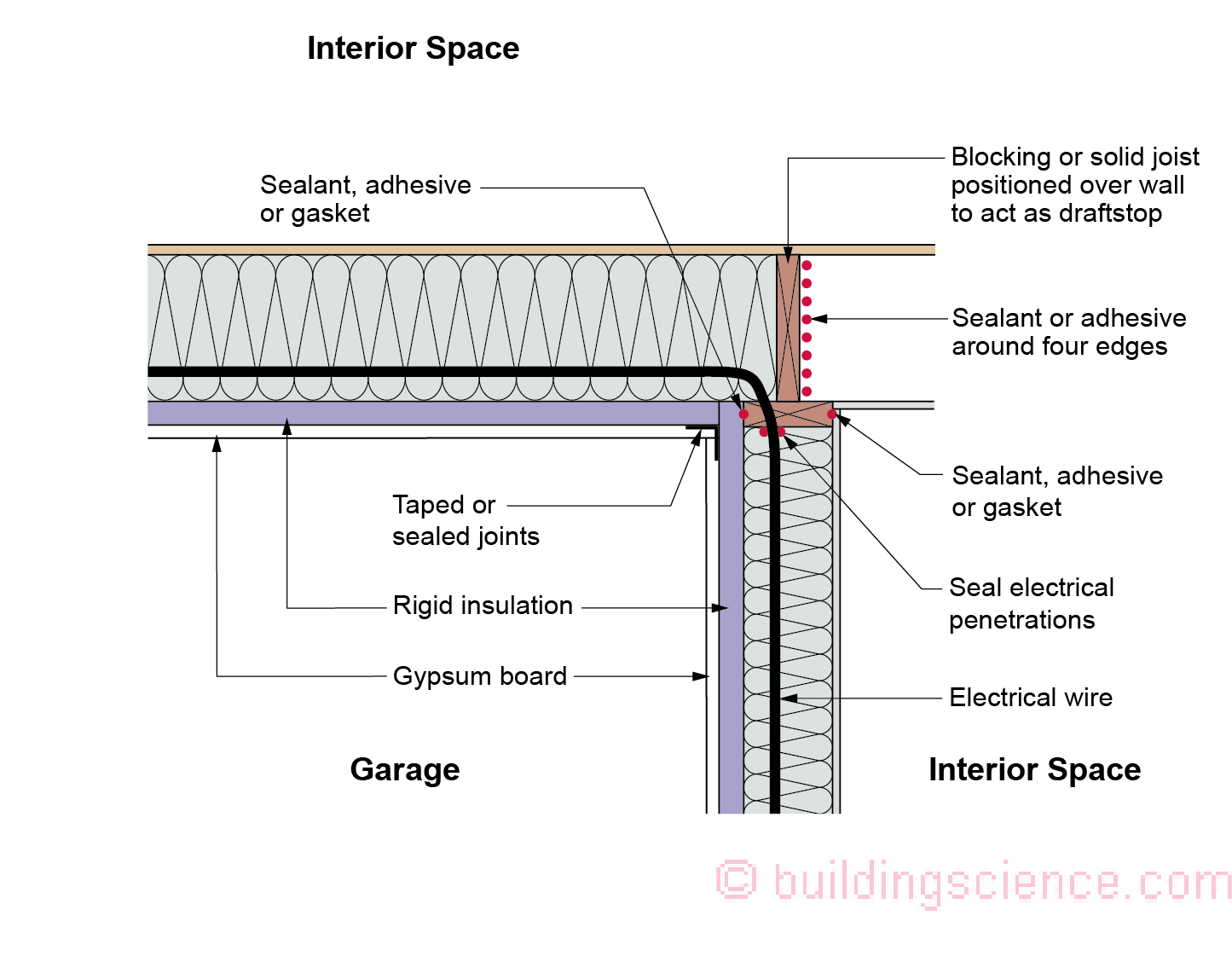
Figure 1: Rigid insulation and wood blocking for air sealing to provide thermal isolation between the occupied space and the garage.
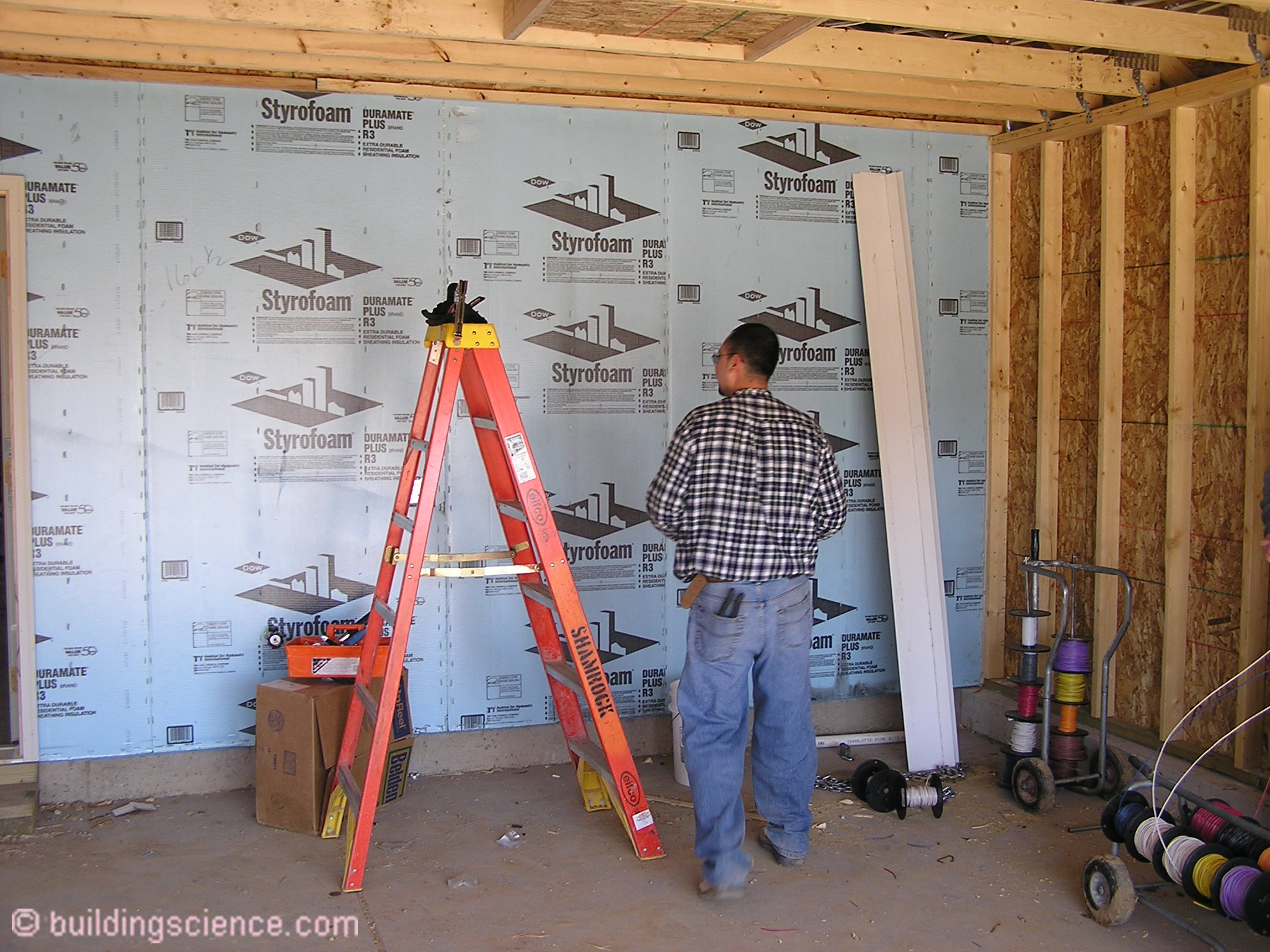
Photograph 2: Rigid insulating sheathing installed on the wall separating the house from the garage. Note that the rigid insulation assembly will need to meet applicable fire rating requirements
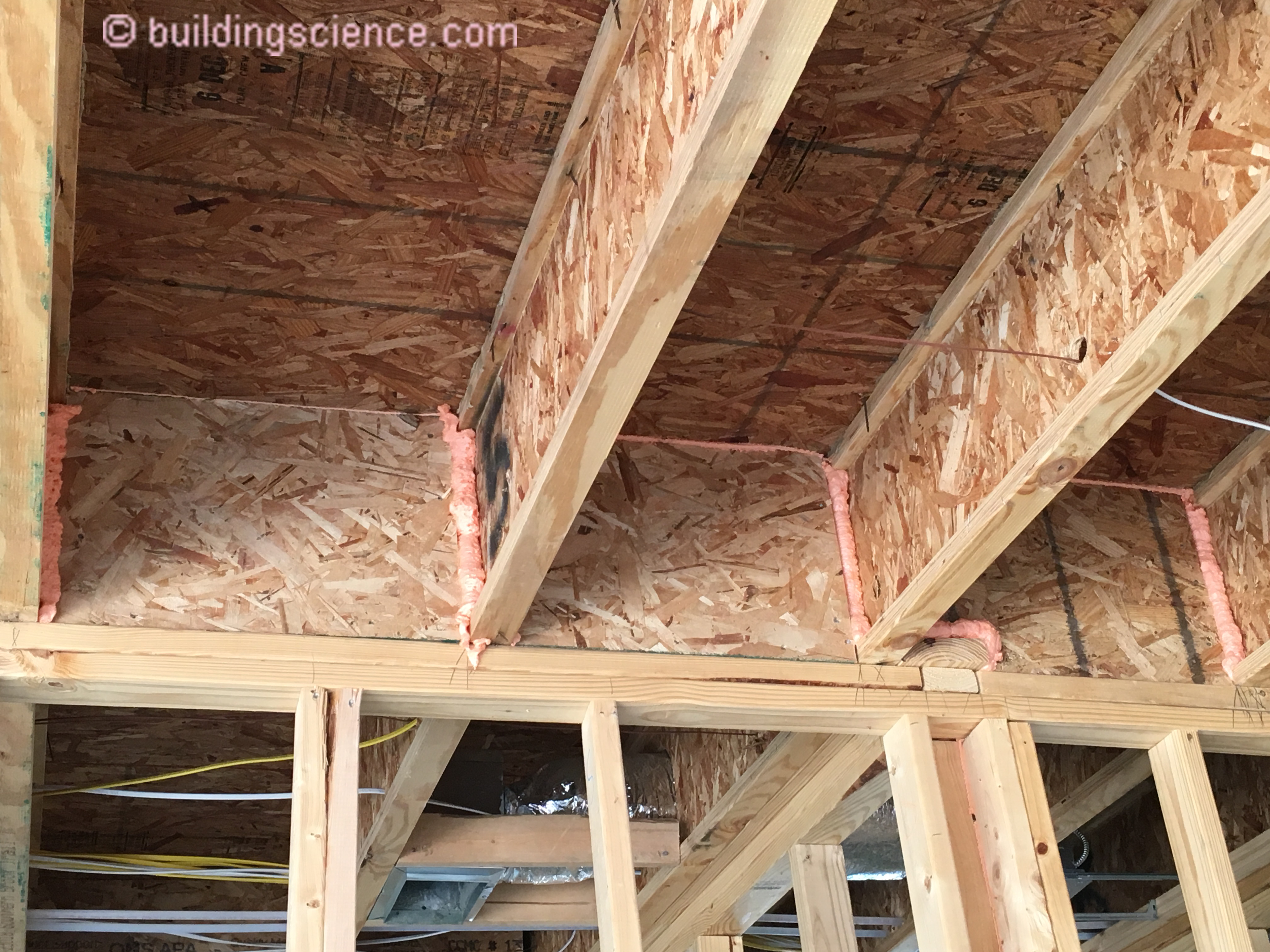
Photograph 3: OSB blocking that is notched and sealed around wood I-joist floor framing.

Photograph 4: Gypsum board blocking used with a floor truss assembly. Note the location of a vertical member within the floor truss to simplify the installation of the truss air sealing gypsum board air sealing blocking.
Where basement foundations are common effective thermal isolation is illustrated in Figure 2. Note that where insulated walls intersect garage slabs fiber cement is often used to provide physical protection of the rigid insulation rather than gypsum board. Where slab foundations are common effective thermal isolation is illustrated in Figure 3.
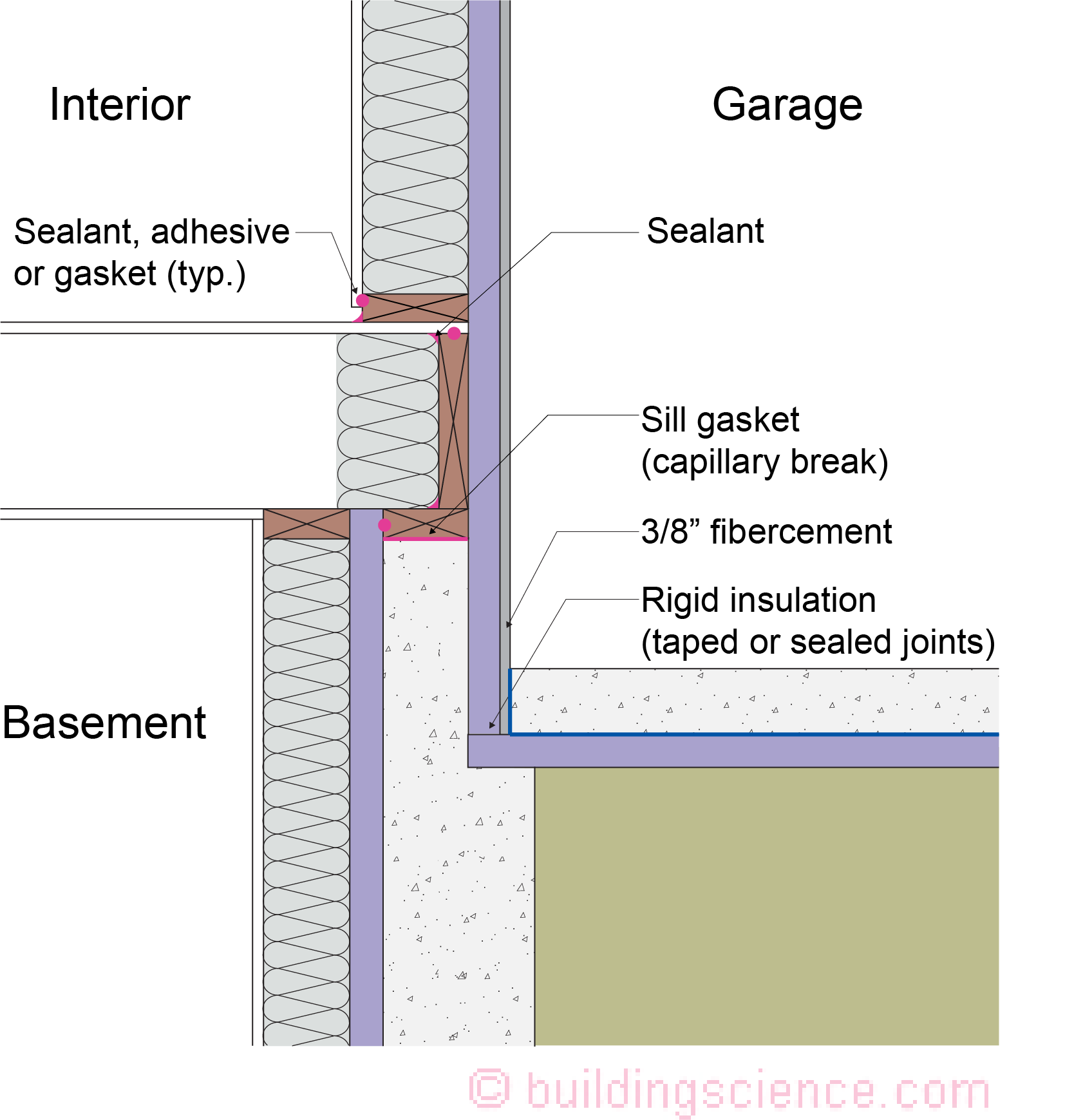
Figure 2: Basement foundation – attached garage thermal isolation.
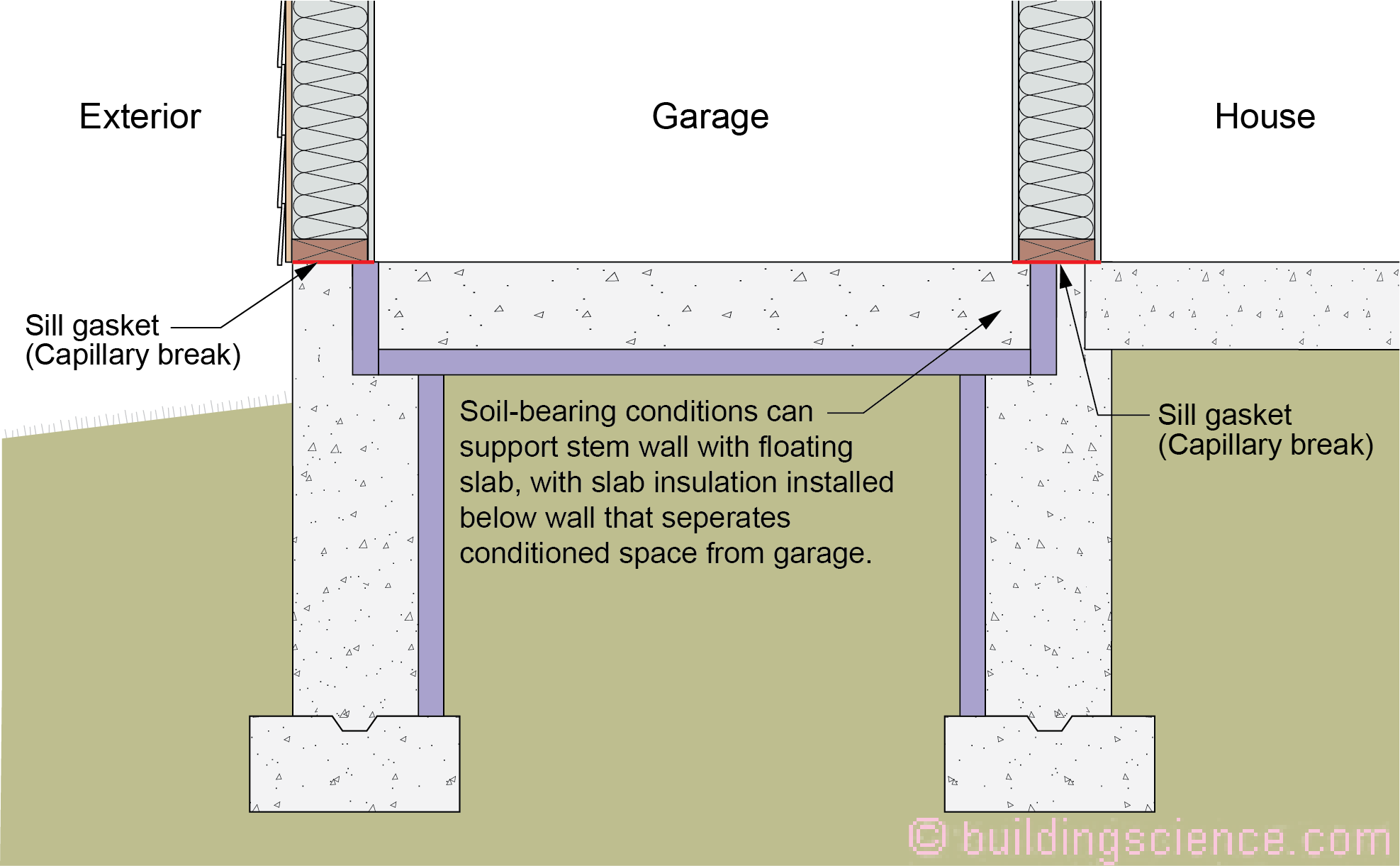
Figure 3: Slab foundation slab foundation thermal isolation.
Figure 4, Photograph 5 and Photograph 6 illustrate the insulation detail at the stem wall portion of the garage foundation.
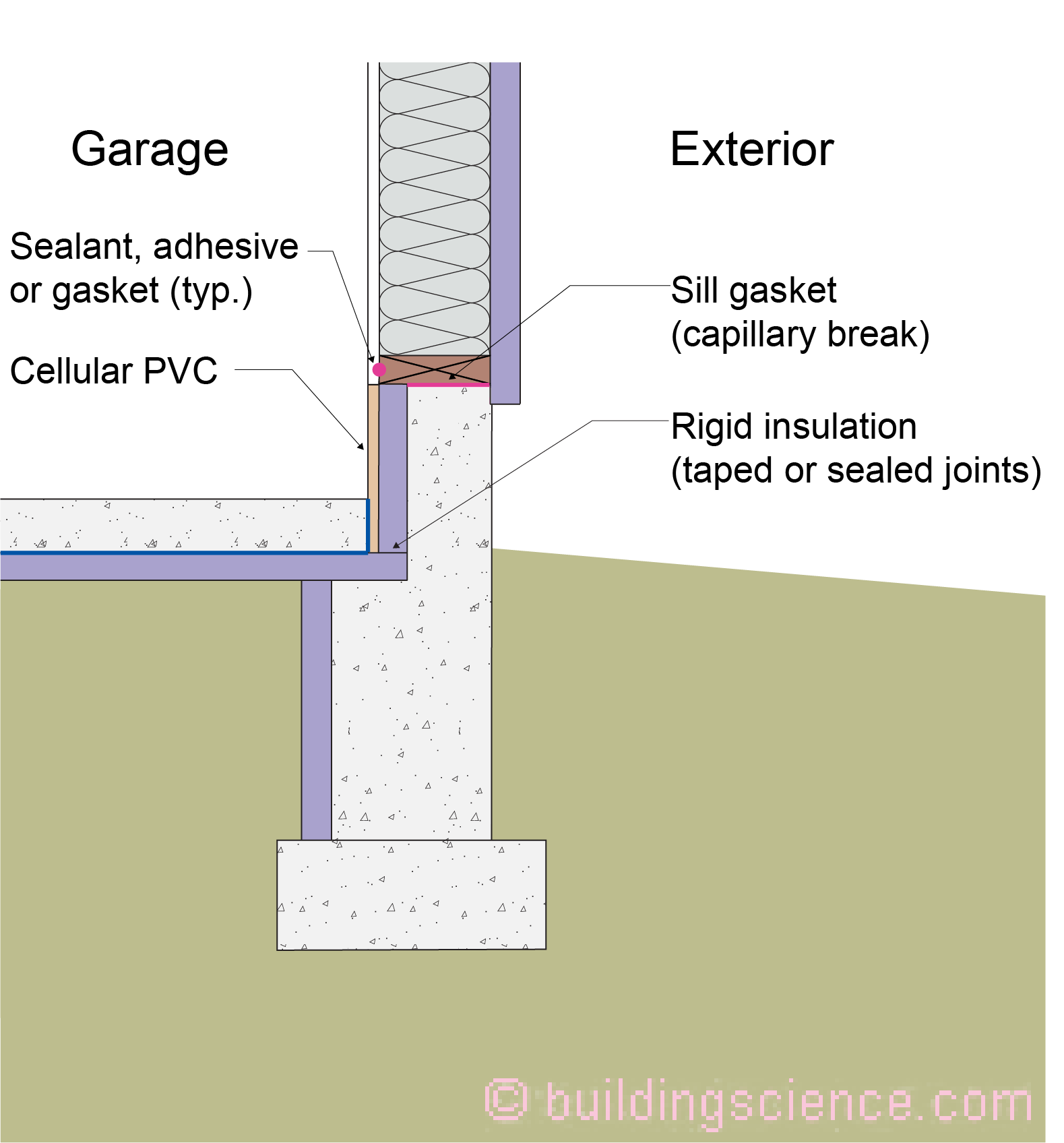
Figure 4: Stem wall garage foundation insulation.
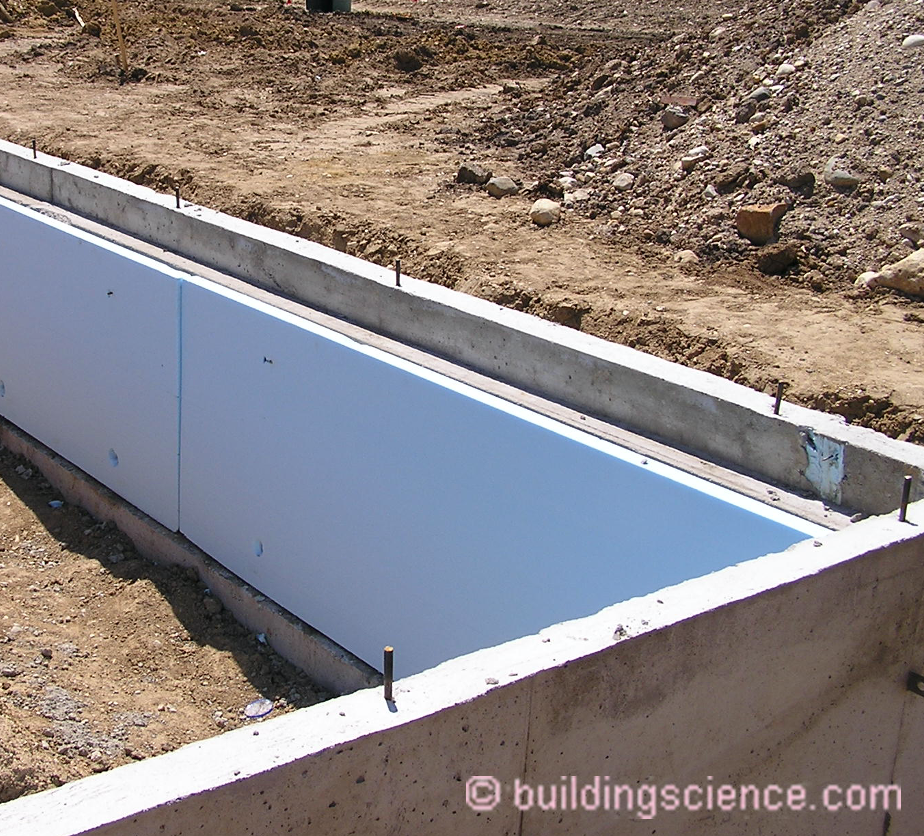
Photograph 5: Insulation detail at the stem wall portion of the garage foundation.
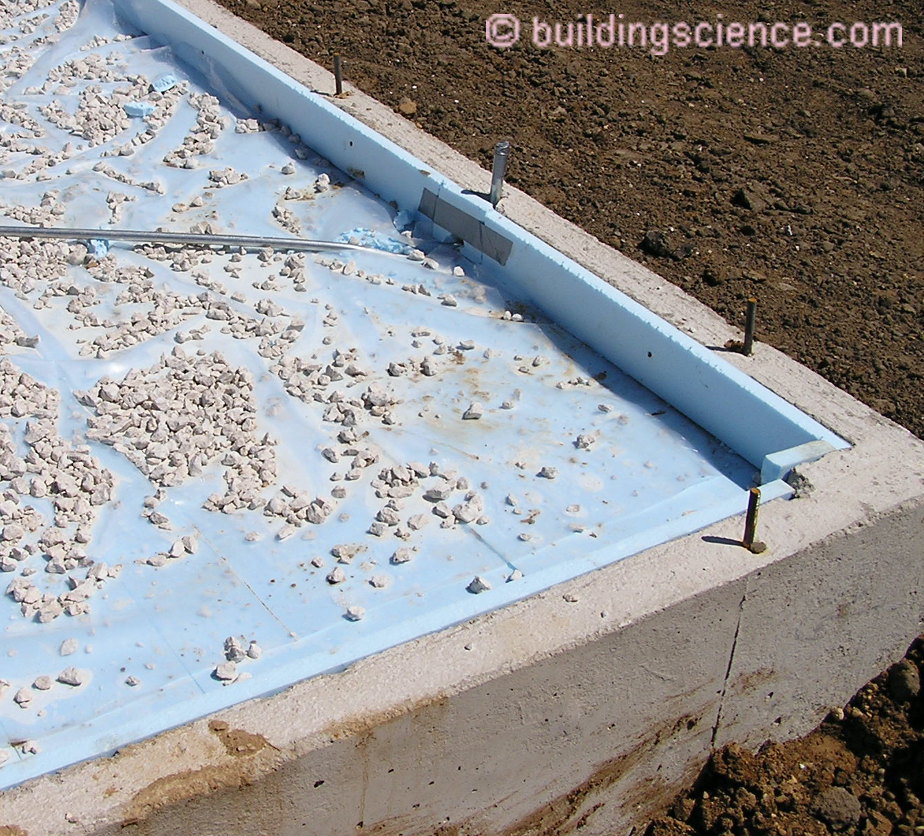
Photograph 6: Insulation detail at the stem wall portion of the garage foundation.
Photograph 7 illustrates the use of spray foam cavity insulation on the walls separating the garage from the exterior. Again, note that the wall assembly will need to meet the applicable fire rating requirements.

Photograph 7: Spray foam cavity insulation on the walls separating the garage from the exterior. Again, note that the wall assembly will need to meet the applicable fire rating requirements.
OK, here comes the “danger…Will Robinson….danger” issue. This is not a minor issue. Garage spaces can be large sources of airborne pollutants. Automobile exhaust is a major source of airborne pollutants. Additionally garages are used for storage for materials that are used for cleaning, snow melt, painting, etc… It is recommended that mechanical ventilation is provided for attached garages.
The intent of installing exhaust fans in attached garages is to depressurize the garage with reference to the occupied space to reduce the risk of contaminants in the garage entering the occupied space. The exhaust flows also reduce the concentration of contaminants within the attached garage. The recommended approach for one enclosed garage per dwelling unit is a 100 CFM ducted exhaust fan. It is also recommended that carbon monoxide (C0) detectors and nitrogen oxide (NO2) detectors be installed in attached garages. The minimum threshold should be set at 25 ppm CO and 1,000 ppb NO23.
OK, more “danger…Will Robinson….danger” stuff. Mechanical air distribution systems (forced air furnaces/AC units) and associated ductwork should not be installed in attached garages (Photograph 8) due to the potential risk for air leakage of such systems drawing air from garages into occupied unit spaces4 unless such systems are located within “air-sealed” rooms (Photograph 9) that are connected to the occupied space.
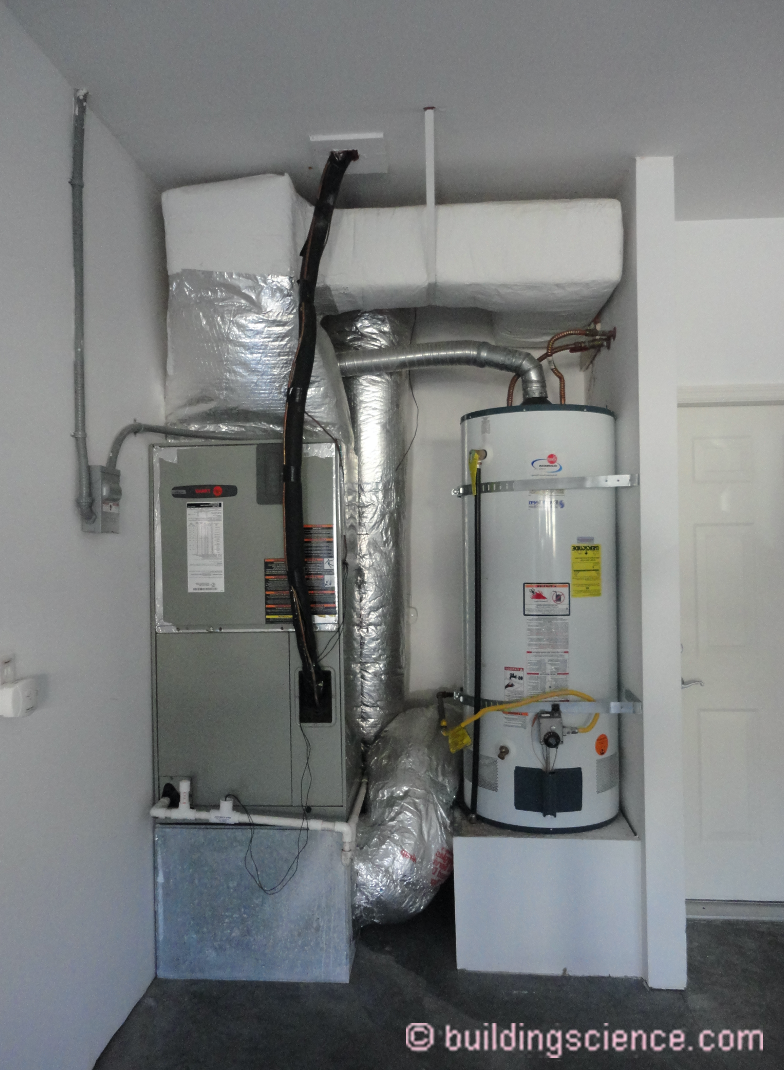
Photograph 8: Mechanical air distribution systems (forced air furnaces/AC units) and associated ductwork should not be installed in attached garages due to the potential risk for air leakage of such systems drawing air from garages into occupied unit spaces
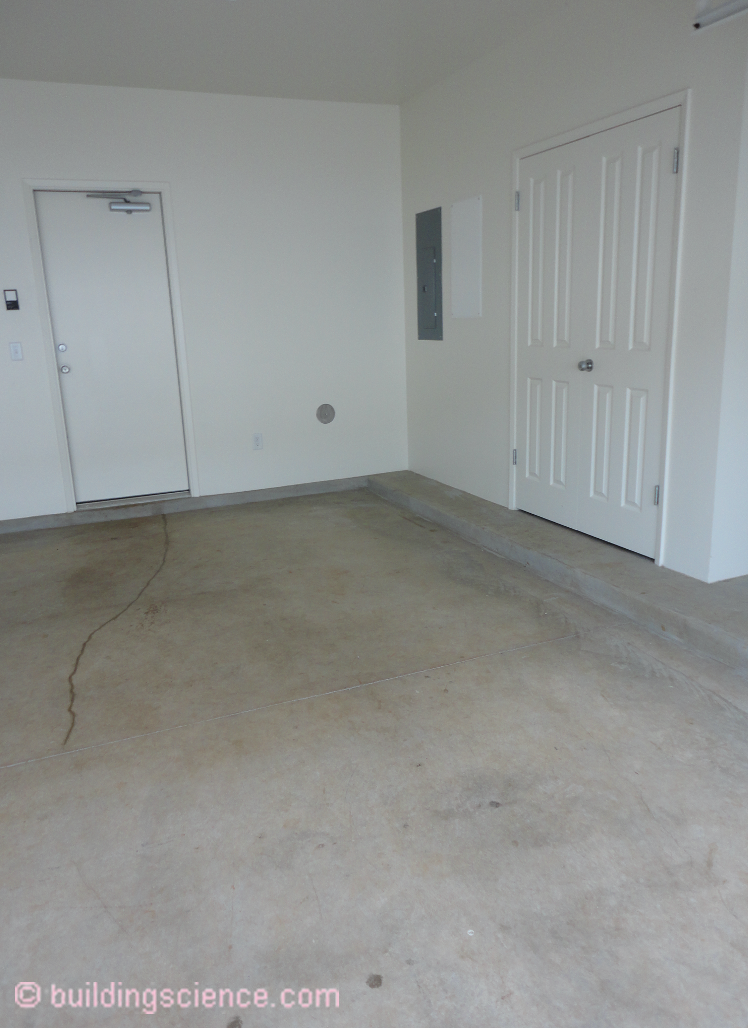
Photograph 9: Mechanical systems should be located within “air-sealed” rooms that are connected to the occupied space. Note the automatic door closer for the door to the occupied unit. Airtight door sweeps and weatherstripping are necessary.
Footnotes
1Dan Tanna is a “high end Las Vegas detective” from the 1978 television show “Vega$”…lives in his garage which is his living room…he parks his 1957 Ford Thunderbird convertible…red…inside…my kind of guy…he lives with his car…
2From the French word “garer” - to shelter or protect…
3This value is based on the current City of Denver Code which I believe to be the “most conservative” in the US. The 2021 International Mechanical Code (IMC) recommended threshold NO2 level for attached garage ventilation is 2,000 ppb. The main argument for NO2 detectors being present is to detect a car that is running…not to provide acceptable indoor air quality levels for NO2 for occupied lived in spaces. The US EPA notes that no standards have been agreed upon for nitrogen oxides in indoor air. ASHRAE and the US. EPA National Ambient Air Quality Standards list 0.053 ppm as the average annual limit for NO2 in outdoor air.
4In Michigan this is referred to as the “Kevorkian option”…
